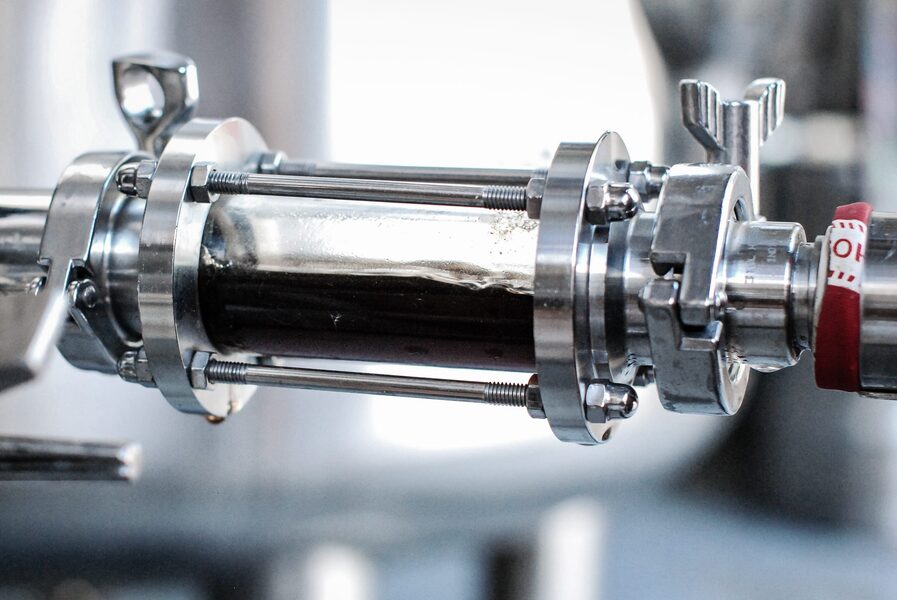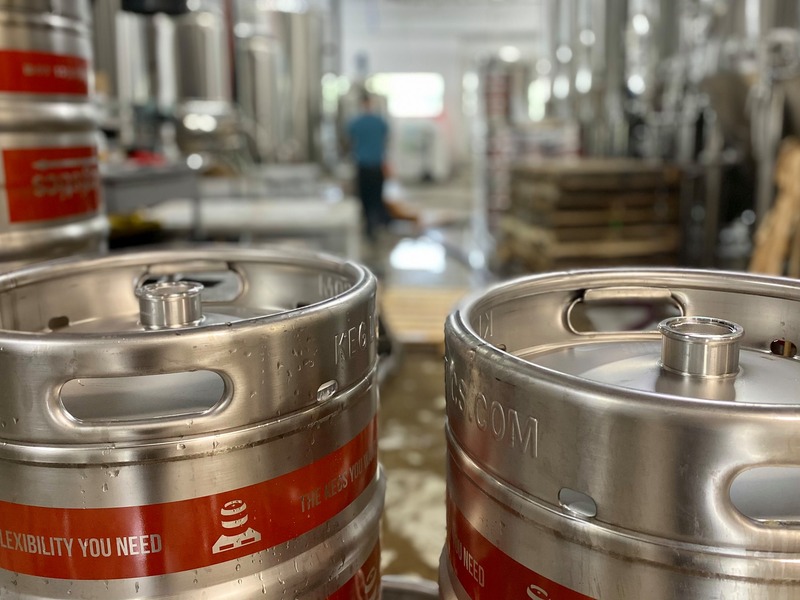Ever wondered what it takes to create that perfect pint right in the comfort of your own home? Well, let me tell you, Sanford Home Brew is not just a hobby; it’s an art. Whether you're a seasoned brewer or a total newbie, Sanford Home Brew has something for everyone. It’s all about experimentation, creativity, and, of course, a good ol' love for beer.
Now, I know what you're thinking—brewing beer at home sounds like a lot of work, right? But trust me, it doesn’t have to be. With the right equipment, ingredients, and a little bit of patience, you can craft some seriously delicious brews that’ll make your friends jealous. And hey, who doesn’t love showing off their skills over a cold one?
So, buckle up because we’re diving deep into the world of Sanford Home Brew. From the basics to advanced techniques, we’ve got you covered. By the end of this article, you’ll feel like a pro ready to take on any brewing challenge. Let’s get started, shall we?
Read also:35kg Cannabis Seized From Travelers The Shocking Details You Need To Know
Here's a quick Table of Contents to help you navigate through this article:
The History of Sanford Home Brew
Essential Equipment for Brewing
Choosing the Right Ingredients
The Brewing Process Explained
Tips and Tricks for Beginners
Common Problems and Solutions
Delicious Recipes to Try
Joining the Sanford Home Brew Community
Health Benefits of Home Brewing
The Future of Sanford Home Brew
The History of Sanford Home Brew
Let’s take a trip down memory lane, shall we? Sanford Home Brew didn’t just pop up overnight. It’s been a journey filled with passion, innovation, and a whole lot of beer. Back in the day, people didn’t have access to the fancy brewing kits we have today. They had to rely on their wits and whatever resources they could find.
In the early days, brewing was more of a necessity than a hobby. People needed a safe way to consume water, and beer provided just that. Fast forward to today, and Sanford Home Brew has evolved into a thriving community of enthusiasts who are passionate about creating unique and flavorful brews.
But why Sanford? Well, Sanford has always been a hub for creativity and innovation. It’s the perfect place for people to come together and share their love for brewing. So, whether you’re in Sanford or just inspired by its brewing culture, this guide is for you.
How Sanford Changed the Game
Sanford didn’t just change the brewing scene; it revolutionized it. By embracing new techniques and technologies, Sanford brewers have set a new standard for home brewing. From experimenting with different hops to incorporating unique flavors, Sanford brewers have pushed the boundaries of what’s possible.
Read also:Aaron Kendrick De Niro The Rising Star Whorsquos Making Waves In Hollywood
And let’s not forget the community aspect. Sanford brewers love to share their knowledge and expertise with others. It’s all about collaboration and learning from each other. This spirit of sharing has made Sanford Home Brew one of the most vibrant brewing communities out there.
Essential Equipment for Brewing
Alright, now that we’ve covered the history, let’s talk about the nitty-gritty. What do you need to get started with Sanford Home Brew? Well, the good news is, you don’t need a ton of fancy equipment. Just a few basic tools and you’re good to go.
Here’s a list of essential equipment you’ll need:
- Boiling Pot: A good-sized pot for boiling your wort.
- Fermentation Bucket: Where the magic happens. This is where your beer will ferment.
- Hydrometer: Used to measure the alcohol content of your beer.
- Airlock: Prevents air from getting into your fermentation bucket.
- Bottling Bucket: For transferring your beer into bottles.
- Bottles and Caps: Duh, you’ll need these to store your beer.
Now, I know what you're thinking—“Do I really need all this?” And the answer is yes, kinda. While you can get away with some improvisation, having the right equipment will make your life a whole lot easier. Trust me, you don’t want to mess up your first batch because you didn’t have the right tools.
Where to Buy Your Equipment
So, where do you get all this stuff? Well, you’ve got a few options. You can hit up your local brewing store, or you can go online and order everything you need. Personally, I like to shop around and compare prices before making a purchase. It’s all about finding the best deal that works for you.
Choosing the Right Ingredients
Now, let’s talk about the fun part—ingredients. The quality of your beer depends heavily on the ingredients you use. So, it’s important to choose wisely. Here’s a quick rundown of the main ingredients you’ll need:
- Malt: The backbone of your beer. Provides the sugar that yeast feeds on.
- Hops: Adds flavor and aroma to your beer.
- Yeast: The little guys that turn sugar into alcohol.
- Water: Yep, good old H2O. Make sure it’s clean and free of impurities.
When it comes to ingredients, don’t be afraid to experiment. Try different types of malt, hops, and yeast to see what works best for you. And remember, quality matters. Don’t skimp on ingredients if you want to make a great beer.
Where to Source Your Ingredients
So, where do you get all these ingredients? Again, you’ve got a few options. You can buy them locally or online. Some brewers even grow their own hops, which is pretty cool if you ask me. Just make sure you’re getting your ingredients from a reputable source. You don’t want to ruin your beer with subpar ingredients.
The Brewing Process Explained
Alright, let’s get into the meat of it—the brewing process. Now, I know it might seem intimidating at first, but trust me, it’s not as hard as it looks. Here’s a step-by-step guide to help you through the process:
- Boil your wort: This is where you combine your malt and water to create the base of your beer.
- Add hops: This is where you add flavor and aroma to your beer. Timing is crucial here.
- Cool the wort: Once you’ve added your hops, it’s time to cool the wort down.
- Ferment: Transfer the wort to your fermentation bucket and add yeast. Let it sit for a few weeks.
- Bottle: Once fermentation is complete, it’s time to bottle your beer.
- Condition: Let your beer sit in the bottles for a few weeks to carbonate.
See, not so hard, right? Of course, there’s a lot more to it, but these are the basic steps. As you gain more experience, you’ll start to experiment with different techniques and timings to create your perfect brew.
Troubleshooting the Process
Now, I know what you're thinking—“What if something goes wrong?” And the answer is, it might. But don’t worry, it happens to the best of us. Here are a few common problems and how to fix them:
- Stuck Fermentation: If your beer isn’t fermenting, try adding more yeast or warming up the fermentation bucket.
- Off Flavors: This could be due to poor sanitation or bad ingredients. Make sure everything is clean and use quality ingredients.
- Flat Beer: If your beer isn’t carbonating, try adding a little more sugar before bottling.
Tips and Tricks for Beginners
Alright, let’s talk about some tips and tricks for beginners. These little nuggets of wisdom will help you avoid common pitfalls and make better beer.
First off, don’t rush the process. Brewing is a slow and steady game. Take your time and enjoy the process. Secondly, always sanitize your equipment. This is crucial to making good beer. And lastly, don’t be afraid to experiment. Try new recipes and techniques to find what works best for you.
Common Mistakes to Avoid
Now, let’s talk about some common mistakes to avoid. One of the biggest mistakes is not following the recipe. Sure, experimentation is great, but you’ve got to start somewhere. Another common mistake is not sanitizing properly. This can lead to off flavors and even spoilage. Lastly, don’t skip the conditioning phase. This is where your beer develops its full flavor.
Common Problems and Solutions
Alright, let’s tackle some common problems and solutions. Whether you’re dealing with stuck fermentation or off flavors, there’s usually a solution. Here’s a quick guide to help you out:
- Stuck Fermentation: Try warming up the fermentation bucket or adding more yeast.
- Off Flavors: Check your sanitation and ingredients. Make sure everything is clean and of good quality.
- Flat Beer: Add a little more sugar before bottling to help with carbonation.
Remember, brewing is all about trial and error. Don’t get discouraged if something goes wrong. Learn from your mistakes and keep on brewing.
When to Seek Help
Now, if you’ve tried everything and nothing’s working, it might be time to seek help. Reach out to your local brewing community or do some research online. Chances are, someone else has had the same problem and can offer some advice.
Delicious Recipes to Try
Alright, let’s talk recipes. Here are a few delicious recipes to try:
- Sanford IPA: A hoppy, flavorful beer that’s perfect for beginners.
- Sanford Stout: A rich, dark beer with a smooth finish.
- Sanford Wheat Beer: A light, refreshing beer that’s great for summer.
These recipes are just a starting point. Once you’ve mastered them, feel free to experiment and create your own unique brews.
Experimenting with Flavors
Now, if you’re feeling adventurous, try experimenting with different flavors. Add fruits, spices, or even coffee to your brews. The possibilities are endless. Just remember, balance is key. You don’t want to overpower your beer with too many flavors.
Joining the Sanford Home Brew Community
Alright, let’s talk about the Sanford Home Brew community. This is where the magic happens. Joining a community of like-minded brewers can be incredibly rewarding. You’ll learn new techniques, get feedback on your brews, and even make some new friends.
So, how do you join? Well, you can start by attending local brewing events or joining online forums. There’s also a ton of social media groups dedicated to home brewing. Whatever route you choose, you’re sure to find a welcoming community of brewers ready to share their knowledge and expertise.
Benefits of Joining a Community
There are so many benefits to joining a brewing community. First off, you’ll get access to a wealth of knowledge and expertise. Secondly, you’ll have the opportunity to taste and critique other people’s brews. And lastly, you’ll make some awesome new friends who share your passion for brewing.
Health Benefits of Home Brewing
Now, let’s talk about the health benefits of home brewing. I know what you're thinking—“Beer and health benefits? Say what?” But hear me out. Brewing beer can actually be good for you. For starters, it’s a great way to reduce stress. There’s something therapeutic about the brewing process.
Plus, beer is packed with nutrients like B vitamins and antioxidants. Of course, moderation is key. You don’t want to overdo it and end up with a beer belly. But a couple of beers a week can actually be good for you.
Mental Health Benefits
Now, let’s talk about the mental health benefits. Brewing beer can be incredibly relaxing. It’s a great way to unwind after a long day. Plus, there’s something incredibly satisfying about creating something with your own hands. Whether you’re brewing for yourself or sharing with friends, it’s a great way to boost your mood and reduce stress.
The Future of Sanford Home


